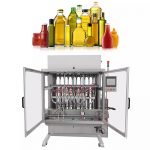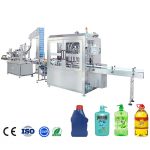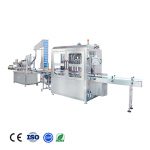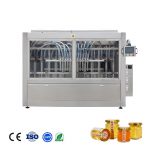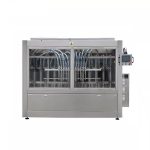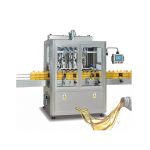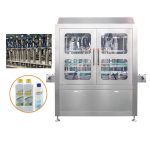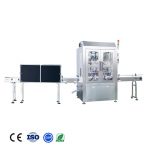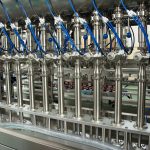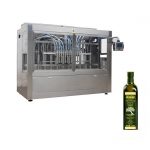What is liquid soap filling machine?
A liquid soap filling machine is a machine used to fill containers with liquid soap, such as hand soap or dish soap. These machines are typically used in the manufacturing or packaging process for liquid soap products. There are several different types of liquid soap filling machines, including piston fillers, gravity fillers, and overflow fillers.
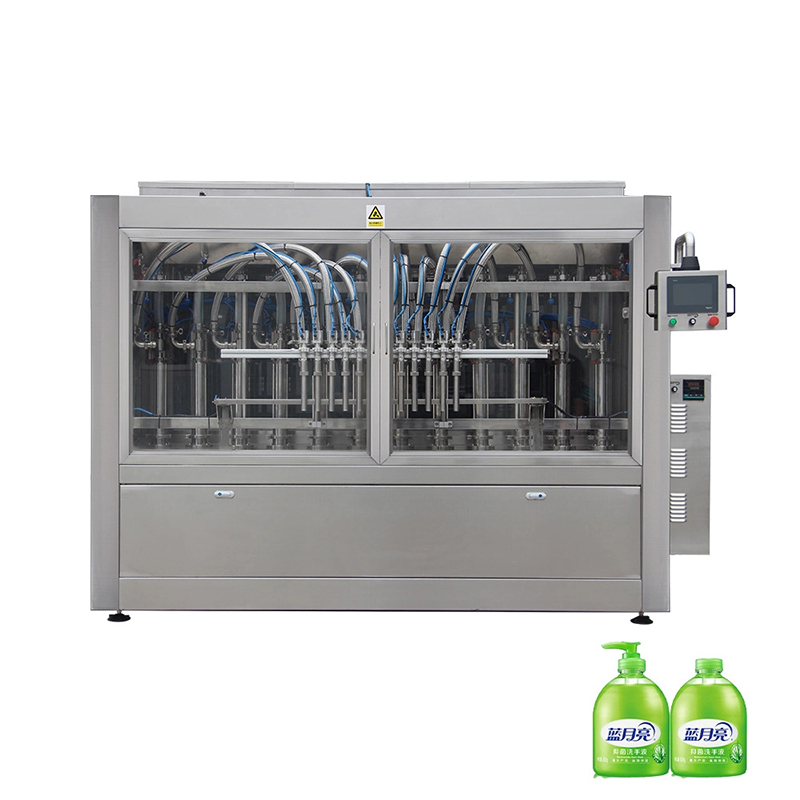
Piston fillers use a piston to dispense the liquid soap into the container, while gravity fillers use the force of gravity to fill the container. Overflow fillers use a small amount of liquid soap to fill the container, with any excess being returned to the supply tank.
Liquid soap filling machines are typically used in conjunction with other equipment, such as capping machines, labeling machines, and packaging equipment, to complete the packaging process for liquid soap products.
What is liquid soap?
Liquid soap is a type of soap that is in liquid form, as opposed to bar soap, which is solid. It is typically made by combining a type of oil, such as coconut oil or palm oil, with an alkali, such as sodium hydroxide or potassium hydroxide, through a process called saponification. This process creates a chemical reaction that converts the oil and alkali into soap and glycerin.
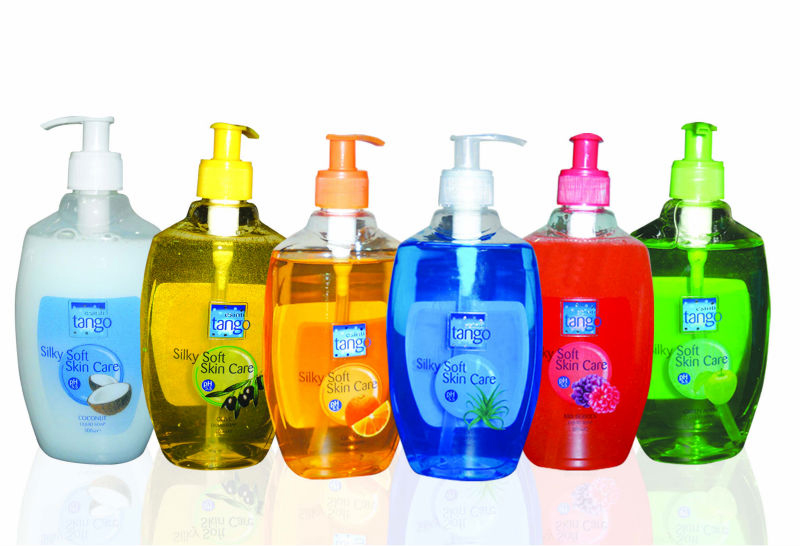
Liquid soap is often used for personal hygiene, such as hand washing or showering, and can also be used for cleaning surfaces or washing dishes. It is available in a variety of scents and formulations, including antibacterial, moisturizing, and fragranced versions. Some people prefer liquid soap because it is easier to dispense and can be less drying to the skin than bar soap.
What are the common packaging liquid soap containers?
There are several common packaging options for liquid soap, including:
- Bottles: Liquid soap is often packaged in bottles, which can be made of plastic, glass, or other materials. Bottles can be dispensed using a pump, a flip top cap, or a screw-on cap.
- Jugs: Liquid soap can also be packaged in jugs, which are typically made of plastic and have a handle for easy carrying. Jugs may have a spout or a cap for dispensing the liquid soap.
- Pouches: Some liquid soap products are packaged in pouches, which are made of flexible plastic or foil. Pouches can be squeezed to dispense the liquid soap.
- Cartridges: Liquid soap can also be packaged in cartridges, which are typically used in foaming soap dispensers. Cartridges are inserted into the dispenser and can be easily replaced when empty.
- Single-use packets: Some liquid soap products are packaged in single-use packets, which can be convenient for travel or for use in public restrooms. These packets can be torn open to dispense the liquid soap.
What are the types of liquid soap filling machine?
There are several types of liquid soap filling machines, including:
- Piston fillers: Piston fillers use a piston to dispense the liquid soap into the container. The piston moves up and down, drawing the liquid soap from the supply tank and pushing it into the container.
- Gravity fillers: Gravity fillers use the force of gravity to fill the container. The liquid soap is poured into a hopper, which is positioned above the containers. The soap then flows down into the containers under the force of gravity.
- Overflow fillers: Overflow fillers use a small amount of liquid soap to fill the container, with any excess being returned to the supply tank. The container is positioned under a spout, and the liquid soap is dispensed until it reaches the top of the container and begins to overflow.
- Time-pressure fillers: Time-pressure fillers use a combination of time and pressure to fill the container. The liquid soap is dispensed into the container for a set amount of time, and then a valve is closed to stop the flow of soap.
- Net weight fillers: Net weight fillers dispense a specific weight of liquid soap into each container. The machine uses sensors to measure the weight of the soap as it is dispensed, and stops automatically when the desired weight is reached.
How to choose liquid soap filling machine?
There are several factors to consider when choosing a liquid soap filling machine, including:
- Production capacity: Consider the amount of liquid soap you need to produce on a daily or monthly basis. Choose a filling machine with a production capacity that meets your needs.
- Container size and shape: Make sure the filling machine can accommodate the size and shape of the containers you will be using.
- Filling accuracy: Consider the level of accuracy you need for filling your liquid soap containers. Some filling machines are more accurate than others, and this can be important for maintaining consistency in your products.
- Speed: Think about how quickly you need to fill your containers. Some filling machines are faster than others, so choose one that meets your production needs.
- Ease of use and maintenance: Consider the ease of use and maintenance of the filling machine. Choose one that is easy to operate and maintain, to minimize downtime and ensure efficient production.
- Budget: Determine your budget and choose a filling machine that fits within it. Keep in mind that purchasing a higher-quality filling machine may result in fewer maintenance and repair costs over the long term.
How does the liquid soap filling machine work?
The specific way in which a liquid soap filling machine works will depend on the type of machine you are using. Here is a general overview of how liquid soap filling machines work:
- The liquid soap is placed in a supply tank or hopper on the filling machine.
- The filling machine is turned on and the containers to be filled are placed in position under the filling nozzle.
- The filling machine dispenses the liquid soap into the containers using one of several methods, such as a piston, gravity, or time-pressure.
- The containers are filled to the desired level, and then the filling machine stops automatically or is manually stopped by the operator.
- The filled containers are removed from the filling machine and may be capped, labeled, or otherwise packaged as desired.
Again, the specific steps and details of the filling process will vary depending on the type of liquid soap filling machine being used.
What are the components of liquid soap filling machine?
The components of a liquid soap filling machine may vary depending on the specific type of machine and the features it has, but here are some common components that you might find:
- Supply tank or hopper: This is where the liquid soap is stored before it is dispensed.
- Filling nozzle: This is the part of the machine that dispenses the liquid soap into the containers.
- Containers: These are the vessels that will hold the liquid soap. They may be made of plastic, glass, or other materials, and can be of various sizes and shapes.
- Conveyor belt: Some filling machines have a conveyor belt to move the containers through the filling process.
- Control panel: This is the part of the machine where the operator can control and monitor the filling process. It may include buttons, switches, and displays.
- Pumps: Some filling machines use pumps to move the liquid soap from the supply tank to the filling nozzle.
- Valves: Valves are used to control the flow of liquid soap through the machine.
- Sensors: Some filling machines have sensors to measure the weight or volume of the liquid soap as it is being dispensed.
- Motor: Many filling machines have a motor to power the various components of the machine.
What are the advantages of liquid soap filling machine?
There are several advantages to using a liquid soap filling machine, including:
- Increased efficiency: A liquid soap filling machine can fill containers much faster than manual filling methods. This can help to increase the efficiency of the production process and reduce labor costs.
- Improved accuracy: Liquid soap filling machines are generally more accurate than manual filling methods, which can help to ensure that the correct amount of liquid soap is dispensed into each container. This can help to reduce waste and improve the consistency of your products.
- Reduced risk of injury: Using a liquid soap filling machine can help to reduce the risk of injury to workers, as it eliminates the need for them to handle heavy containers or handle hazardous chemicals.
- Greater flexibility: Many liquid soap filling machines can be adjusted to fill different sizes and types of containers, allowing for greater flexibility in the production process.
- Reduced cleanup: Liquid soap filling machines often minimize the amount of mess and spills associated with manual filling methods, which can reduce cleanup time and effort.
- Improved safety: Liquid soap filling machines can include safety features, such as guards and emergency stop buttons, to help protect workers and prevent accidents.
Customize your liquid soap filling line
If you want to customize your liquid soap filling line, there are several options to consider:
- Choose the right filling machine: Select a filling machine that meets the specific needs of your production process. Consider factors such as production capacity, filling accuracy, container size and shape, and budget.
- Add additional equipment: You may want to add other equipment to your filling line, such as capping machines, labeling machines, or packaging equipment. This can help to streamline the production process and improve efficiency.
- Customize the filling machine: Some filling machine manufacturers offer customization options, such as custom nozzles or conveyor belts, to better meet the needs of your production process.
- Implement automation: Automation can help to improve the efficiency and accuracy of the filling process. Consider incorporating automation technologies, such as robots or automated conveyor systems, into your filling line.
- Optimize your layout: The layout of your filling line can impact the efficiency of your production process. Consider the layout of your equipment and optimize it for the most efficient flow of materials and products.
- Ensure proper training: Proper training is essential for the safe and efficient operation of your filling line. Make sure that all workers are trained on the proper use of the equipment and any safety procedures.

